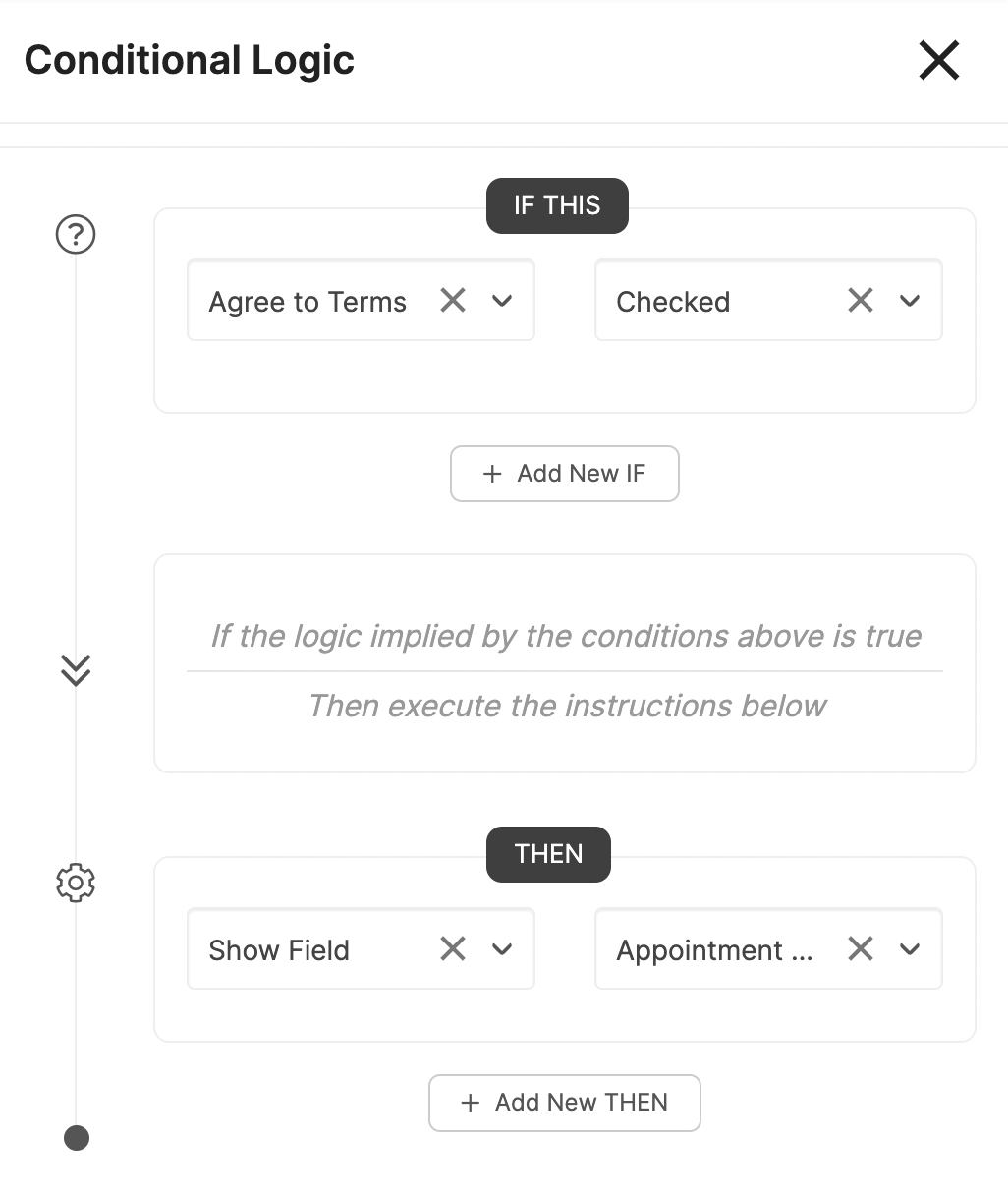What is Conditional Logic?
Conditional Logic allows you to create Forms that change based on user input. Depending on what the Target (the user who is filling out the Form) enters into a field, it can trigger whether or not to Show or Hide a different field. You can stack multiple requirements for the same Condition and layer Conditions to create a complex, multipath Form.
CLICK HERE to learn about Forms
Conditional Logic is available for all three Form Types ( Kickoff, Update, and General) in the platform.
How do I add Conditional Logic to a Form Field?
Navigate to Forms and click the +Create Form button.
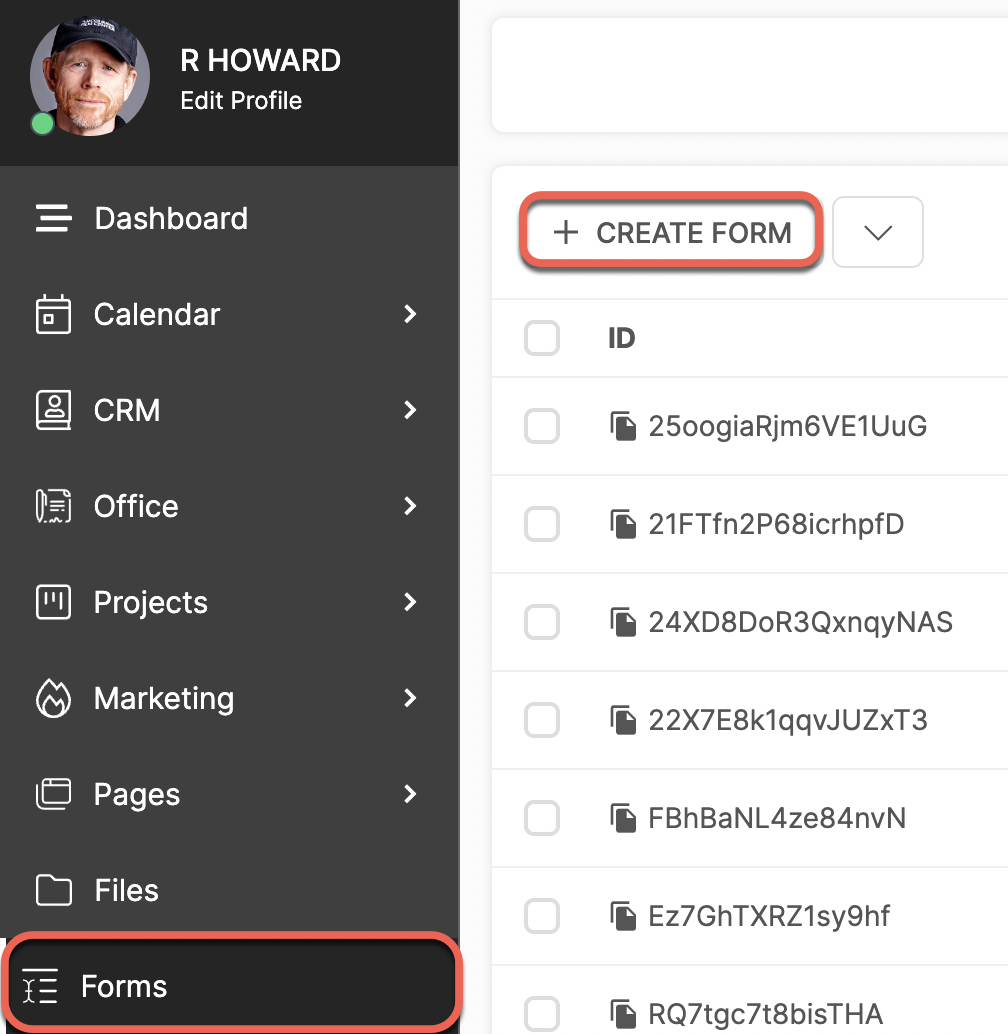
Select which type of Form you would like to work with. All types have the option of Conditional Logic.

While in the editing screen, you'll see a tab to the right of the screen with a icon. You can click on this at any time to open a side panel, in which you can then configure your Conditional Logic.
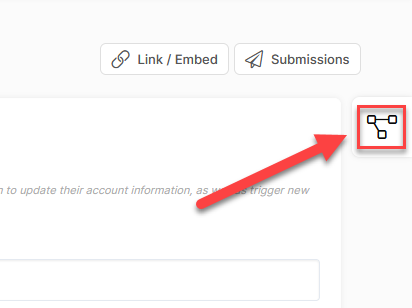
As you add Custom Fields (or Form Fields if you are creating a General Form), they will automatically be added for selection in the dropdown menu within the Conditional interface.
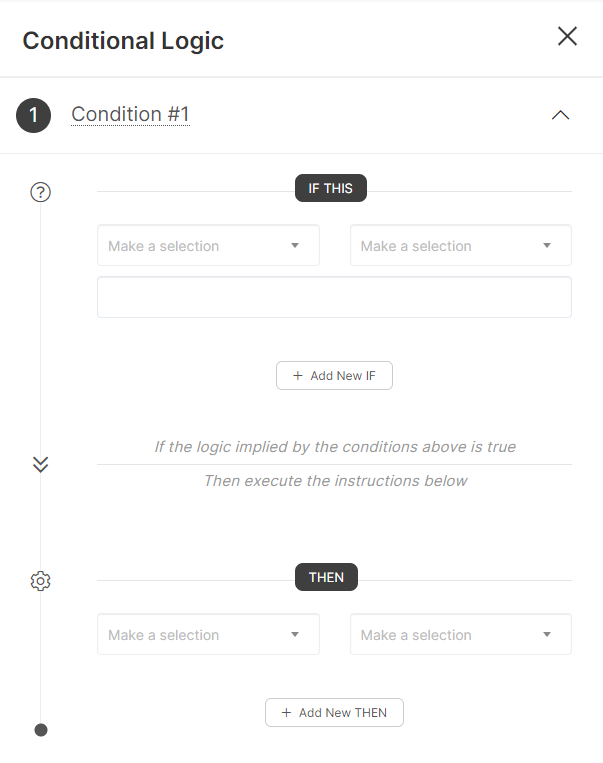
Here you can set up your Conditional Statement(s), which will tell the form whether to show/hide other fields based on user responses.
Understanding IF Conditional Statements
In order to configure your Conditional Logic, you'll need to set up a Condition for the IF requirement that triggers the appropriate THEN behavior. The options provided will differ depending on the Type of field that is selected. These Conditions can contain multiple Conditional Statements.
TIP: Triggering Conditional Logic is not available for the "File Upload" Field Type.
For each Statement, you will be provided a field to enter the data that the response will be compared to.
CLICK HERE to learn about Field Types
CONDITIONAL STATEMENTS FOR TEXT, EMAIL & URL FIELDS
If you are adding Conditional Logic to a Single-line Text Area, Multi-line Text Area, Email, or URL Field Type, you will have the following Statements to choose from.
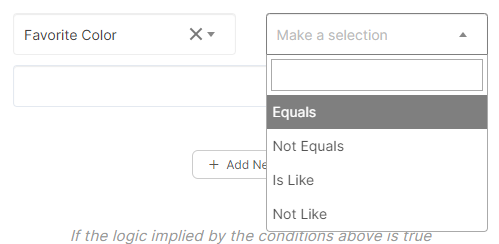
Equals: The response matches the specific value provided
Not Equals: The response does NOT match the specific value provided
For example, if your IF Statement says Equals "cats", and the response is "cats and dogs", the THEN logic will not trigger. It is looking for an exact match to the response in the field.
Is Like: The response contains the specified provided value somewhere
Not Like: The response does NOT contain the specific provided value somewhere
For example, if your IF Statement says Is Like "birds", and the response is "birds and fish", the THEN logic will trigger. It is not looking for an exact 1:1 match to the response in the field; instead, it is looking for a match within the response.
TIP: All of these options ignore uppercase/lowercase. If the condition is looking for "cats", and the response is "Cats", the THEN logic will trigger.
IMPORTANT: The "Company Name" User Field will only appear in the Conditional Logic dropdown menu if you enable the Allow open-ended input of Company Name option.
CONDITIONAL STATEMENTS FOR DROPDOWN & MULTIPLE CHOICE FIELDS
If you are adding Conditional Logic to a Dropdown or Multiple Choice Field Type, you will have the following Statements to choose from.

Has Selected: This choice has been selected
Has Not Selected: This choice has not been selected
For example, if your IF Statement says Has Selected "B", and the Target has selected "A" and "B", the THEN logic will trigger.
CONDITIONAL STATEMENTS FOR NUMBER & DATE FIELDS
If you are adding Conditional Logic to a Number or Date Field Type, you will have the following Statements to choose from:

Equals: The response matches the specific number (or date) provided.
Not Equals: The response does NOT match the specific number (or date) provided
Greater Than: The response must contain a number greater (or later) than the value provided
Greater or Equal: The response must contain a number that is greater (or later) or matches the value provided
Less Than: The response must contain a number less (or earlier) than the value provided
Less or Equal: The response must contain a number that is less than (or earlier) or matches the value provided
For example, for numbers, if your IF Statement says Greater Than "5", and the response is "5", the THEN logic will not trigger. If the IF Statement says Greater or Equal "5", and the response is "5", the THEN logic will trigger.
For dates, If your IF condition says Greater than "12/12/2012", and the response is "12/12/2012", the THEN logic will not trigger. If the IF Statement says Greater or Equal "12/12/2012", and the response is "12/12/2012", the THEN logic will trigger.
CONDITIONAL STATEMENTS FOR CHECKBOX FIELDS
If you are adding Conditional Logic to a Checkbox Field Type, you will have the following Statements to choose from.
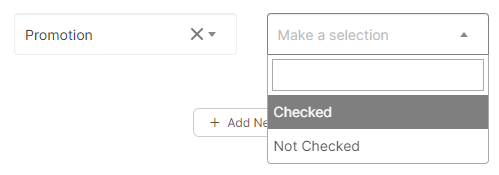
Checked: This checkbox has been selected
Not Checked: This checkbox has not been selected
Adding Additional Statements
For each Condition, you can add multiple Statements using ANY or ALL logic.
Click the +Add New IF button to add a new IF Statement and a dropdown will appear at the top with an ANY or ALL choice.
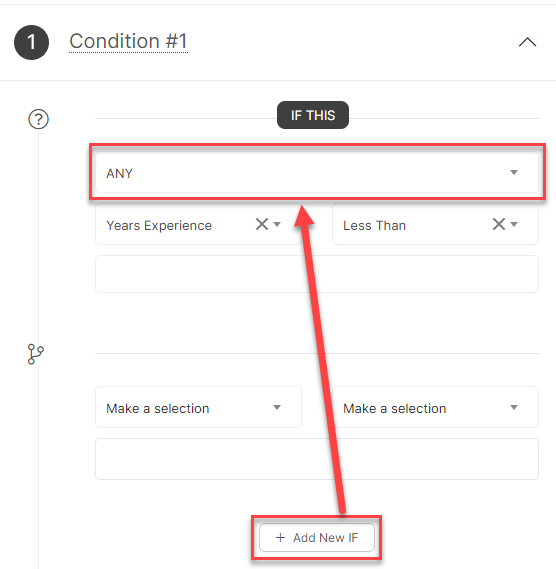
ANY: The response(s) must be true for any of Statement of the Condition
ALL: The response(s) must be true for all Statements of the Condition
For example, If your Condition is structured as the following with the ALL command:

This means that in order for the THEN logic to trigger, the response must be either 6, 7, 8, 9, or 10. If a response of 11 is provided, it is only True for the "Greater Than" Statement, but not for the "Less or Equal" Statement, and thus is False. (NOTE: This is simplified to better illustrate the functionality - integers can also be accepted, so 5.1, 5.2, etc., are also accepted responses.)
You are not limited to using these additional commands to the same field for a single Condition.
For example, if your Condition is structured as the following with the ANY command:
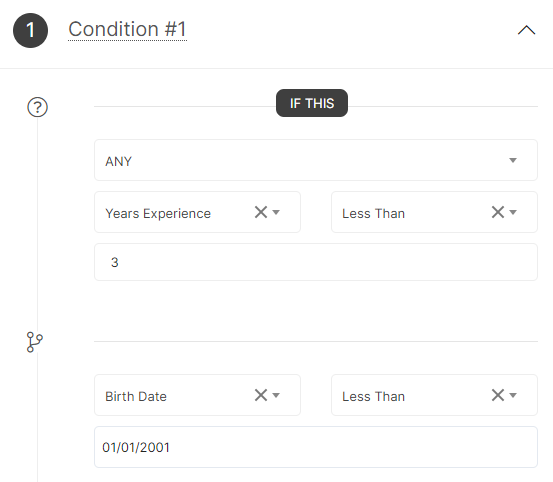
This means that in order for the THEN logic to trigger, the responses must either be fewer than 3 for "Years Experience", or earlier than January 1st, 2001 for "Birth Date". If the Target enters a greater number for "Years Experience", but an earlier date for "Birth Date", the Condition is True, and will trigger.
You can add any number of Statements to a Condition. Here's an example of an IF Condition you can create:
IF
(ANY of the Statements can be True)
"Years Experience" is Greater Than "0"
"Years Experience" is Less Or Equal "3"
"Birth Date" is earlier than January 1st, 2001
Has Selected "Part-Time" for "Availability"
As long at least one of the response(s) in the corresponding fields meets the requirements of the Statement, this Condition will be recognized as True, which will trigger the THEN logic that you set up.
Understanding THEN Conditional Statements
Once you have your IF Condition set up, it's time to configure what happens when that Condition is True to complete your formula.
You can choose between Show Field and Hide Field, then choose the field that will either be shown or hidden.
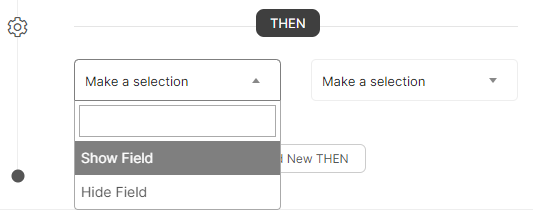
You can click the +Add new IF button to add additional Statements so that multiple fields will either be shown/hidden when triggered.
Conditional Logic for Appointment Blocks
Conditional Logic for Appointment Blocks follows the same rules as above. Here is an example of how it could work:
We are using the custom field "Agree to Terms". This field is a checkbox. IF the Target agrees to the terms by checking the box THEN it will show the Appointment Block. IF the Target does not agree to the terms by checking the box THEN it will not show the Appointment Block.
